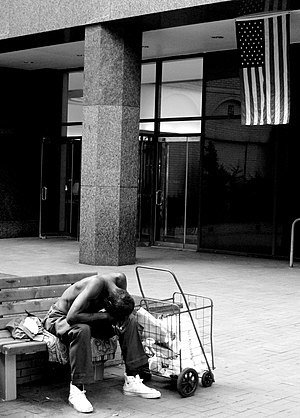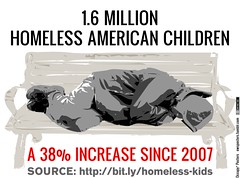Washington D.C. council member Tommy Wells has introduced legislation to help pay rent for “low-income and very-low income seniors.” The Housing Assistance Program for Unsubsidized Seniors Act of 2013 would provide assistance to D.C. residents over the age of 65 whose rental payments exceed 35 percent of their income.
Wells said:
Because of the rising costs of living and the rising costs of health care, District seniors are more and more frequently confronted by homelessness. It is unacceptable that they are being forced to choose between paying for medicine and food or paying their rent.
Too many longtime District residents have been forced to move away from the city they’ve helped build or worse fallen into homelessness. It is time for the District to step up and provide the preventative assistance necessary to ensure our seniors do not end up homeless.
Recently, the National Health Care for the Homeless Council (NHCHC) reported that “strong demographic trends, economic insecurity and lack of affordable senior living have contributed to increased housing instability among seniors.
A study by the Kaiser Family Foundation found that 26 percent of the senior citizens who live in the nation’s capital, about 25,000 men and women, live at or below the poverty level.
A 2011 study by the Homeless Research Institute of the National Alliance to End Homelessness estimated that the number of homeless senior citizens will increase by 33 percent in 2020 (44,172 in 2010 to 58,772 in 2020) and will double from the current number by the year 2050, with 95,000 older people expected to be living without stable housing.
According to AARP:
A great contributor to this phenomenon is the fact that the baby boomer generation is now hitting 65. Already, about 45 million Americans are considered senior citizens and according to U.S. Census projections, that number is expected to grow to 60 million, topping off at 90 million by the year 2050. These numbers mean that added services such as housing, health care and nutrition will greatly be needed.
The NHCHC reports that the age composition of the homeless population has shifted significantly over the past two decades, with the median age of single adults increasing from 35 years in 1990 to 50 years in 2010. Still, the majority of unstably housed adults over 50 are between 50 and 64 years old, with only 5 percent age 65 and over.
While a number of safety net programs exist for the elderly, those between ages 50 and 64 often fall through the cracks, despite having similar physical health to those much older, due to daily stress, poor nutrition and poor living conditions.
The D.C. council members who proposed and have expressed support for the rent-assistance measure believe the number of homeless senior citizens can be reduced if they are given assistance through this program and another proposed effort proposed to exempt senior citizens who are long-time residents of the District and earn less than $60,000 from paying property taxes.



















 Winter is coming, and that is a bad time to be without shelter. The further north you go the harsher the climate, and thus the harder it is to survive unsheltered. Think about it when you run from your front door to your car, from island of heat to island of heat. Now think about that moment in the cold and stretch it out to days, weeks, months. For many, especially the very young and the very old, it can be the last season they will ever see.
Winter is coming, and that is a bad time to be without shelter. The further north you go the harsher the climate, and thus the harder it is to survive unsheltered. Think about it when you run from your front door to your car, from island of heat to island of heat. Now think about that moment in the cold and stretch it out to days, weeks, months. For many, especially the very young and the very old, it can be the last season they will ever see.







